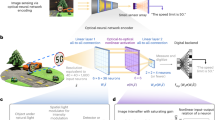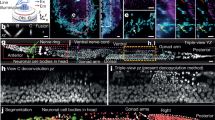Abstract
THE detail-recording ability of a photographic emulsion may be tested by exposing it through a very narrow slit, and, after processing, measuring the variation of density with distance, x, from the centre line of the image. When the scale of density is transformed into a scale of effective intensity of illumination, the result is the line-spread function, B(x).
This is a preview of subscription content, access via your institution
Access options
Subscribe to this journal
Receive 51 print issues and online access
$199.00 per year
only $3.90 per issue
Buy this article
- Purchase on SpringerLink
- Instant access to full article PDF
Prices may be subject to local taxes which are calculated during checkout
Similar content being viewed by others
References
Frieser, H., Phot. Korr., 91, 69 (1955); 92, 51, 183 (1956).
Ingelstam, E., et al., J. Opt. Soc. Amer., 46, 707 (1956).
Perrin, F. H., J. Soc. Motion Picture Televis. Eng., 69, 151, 239 (1960).
Author information
Authors and Affiliations
Rights and permissions
About this article
Cite this article
LEWIS, N. Line-Spread Functions of Photographic Emulsions. Nature 189, 909 (1961). https://doi.org/10.1038/189909a0
Issue date:
DOI: https://doi.org/10.1038/189909a0



